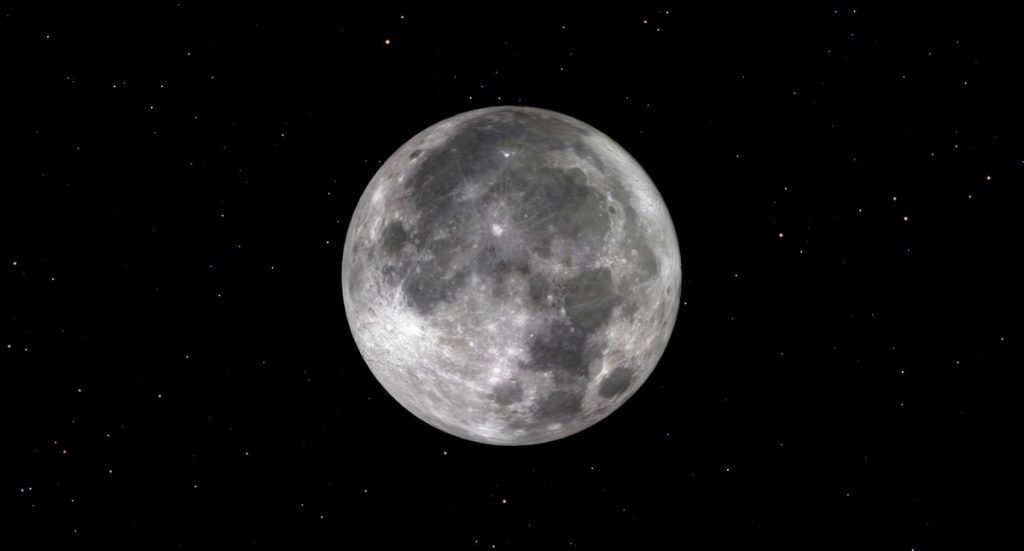
NASA may use lasers to livestream from the moon one day (Image Credit: Space.com)
Getting a live play-by-play of astronauts in space during future Artemis moon missions could eventually be possible thanks to laser technology.NASA is testing a space communication method that, instead of using radio waves to transmit data and videos, uses a laser beam to connect ground control on Earth with astronauts on the moon.
The bar has been set for a while, with NASA teams making huge strides in laser communications since an experiment performed in December of 2023. After years of working on the technology, during this test, a video of Taters the cat was sent through a laser communications streaming service from 19 million miles away back to Earth.
The next round of experiments began in early June, and featured connecting NASA’s Pilatus PC-12 plane back to instruments at NASA’s Glenn Research Center in Cleveland via laser link. Heading into July, the team historically sent a 4K video on a roundtrip journey to the International Space Station (ISS) from an aircraft. And on July 30, Space.com witnessed the completion of another experiment in the series as the aircraft did another test run of the so-called High-Rate Delay Tolerant Networking system (HDTN).
“HDTN has actually broken several world records and achieved some firsts for space in general and the United States,” Rachel Dudukovich, lead engineer for HDTN at NASA Glenn told Space.com. “We’ve demonstrated a secure file transfer from the ISS, which is the first time that’s been demonstrated ever. We demonstrated over 900 megabits per second over the laser communications link from ISS, which is also the first time that’s ever been demonstrated in space.”
Related: NASA laser-beams adorable cat video to Earth from 19 million miles away (video)

How does it work? Basically, this type of networking can potentially create a solar-system-wide internet that’s reliable, secure and can transmit automated data at high data rates. In the recent demonstration, Space.com was able to watch the aircraft take-off; shortly after, it began communicating through laser beams with a team of scientists on the ground.
“We address challenges of the environment such as long delays and disruptions caused by weather; the protocols that we use are specifically designed to meet those needs,” Dudukovich said. “What we do is we store data when the link has been disrupted, and once it resumes, then we go ahead and we continue to transmit data. It’s a buffering capability, essentially, at high rates.”
In addition to live streaming and sending videos and data, this technology will also create a space-wide web of sorts, allowing the teams in space to stay more connected to Earth than ever before.
“We have protocols and standards that make a space network act like the internet we all enjoy with our connectivity. When we put these two things together, we can start to provide services to spacecraft,” Daniel Raible, an electronics engineer and principal investigator at NASA Glenn, told Space.com. “Services could be things like sending command and control out, getting telemetry back from vehicles, and also with our human spaceflight missions, sending text messages and emails back and forth and video conferencing as well.”
In the past, NASA missions counted on radio waves to get information both to space and back to Earth. The difference with using laser, or optical, communications versus radio waves is researchers and scientists rely on infrared light instead, allowing for a larger amount of bandwidth and more data to come back to Earth from spacecraft through the laser link. This also allows for more services to be available despite large variations in time and distance due to what scientists call a “store and forward” protocol.
“The internet — which is large and spans the globe — with it, we’re still connected within a fraction of a second of each other. Once you get out to the moon, you get beyond a second of time delay and, when you get out to Mars, it’s a four to 20 minute time delay depending on where we’re at. The software takes care of all that with the delays and the outages that happen frequently in spacecraft communications,” Raible said. “When we get outages on the aircraft, maybe a cloud obscuration for a period of time or a wing that drops over the laser, solar outages are similar. What the software does is it buffers up all of that data and, when you get a link available again, it starts to burst it out.”
The successful test run on Tuesday is just one part of the big picture.
“We collect as much data as we can while the configuration is in place and then [the researchers] go back to the lab and figure out what they really got out of the program. You can even sit in the hangar and push data back and forth,” Mark Russell, a research pilot at NASA Glenn, told Space.com. “We call this a facility; it’s a testbed. A lot of work that we do isn’t even in the air; there’s a lot of ground integration and testing there.
“But it’s important, and we are the only group in all of NASA that does this kind of work … and I think we do it very well.”








